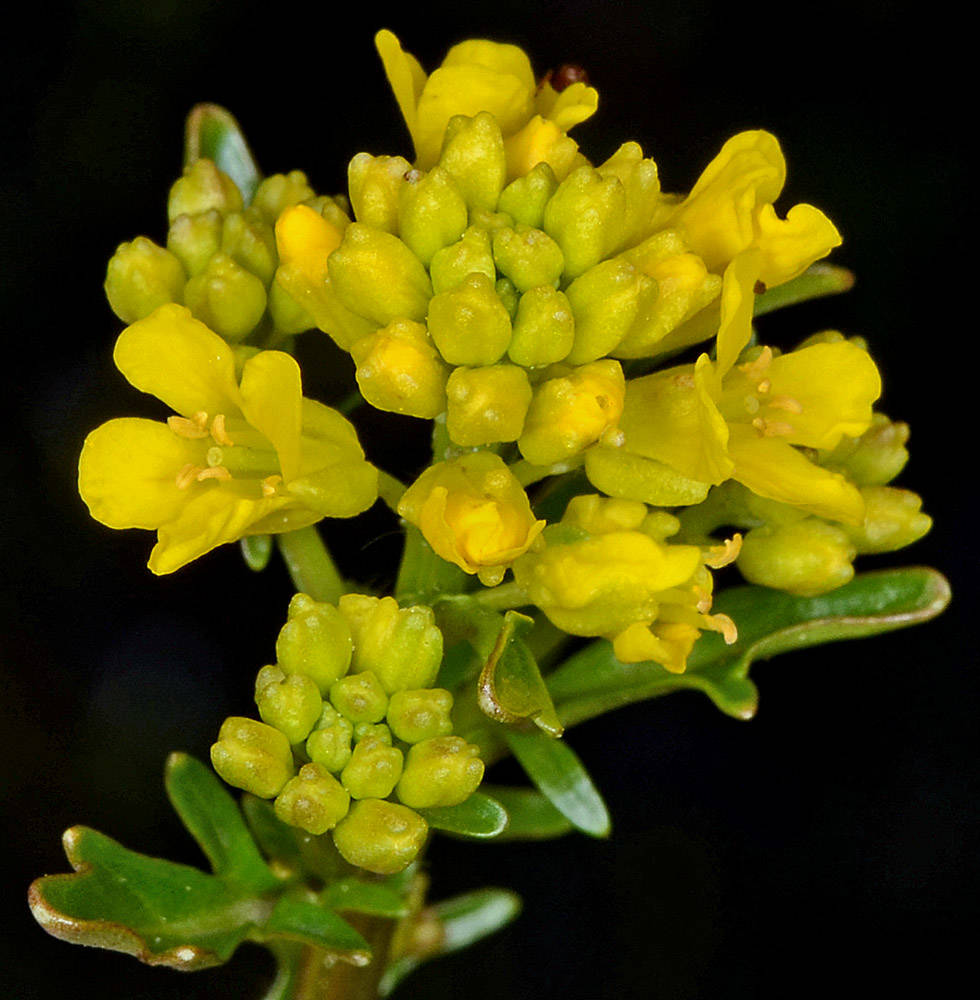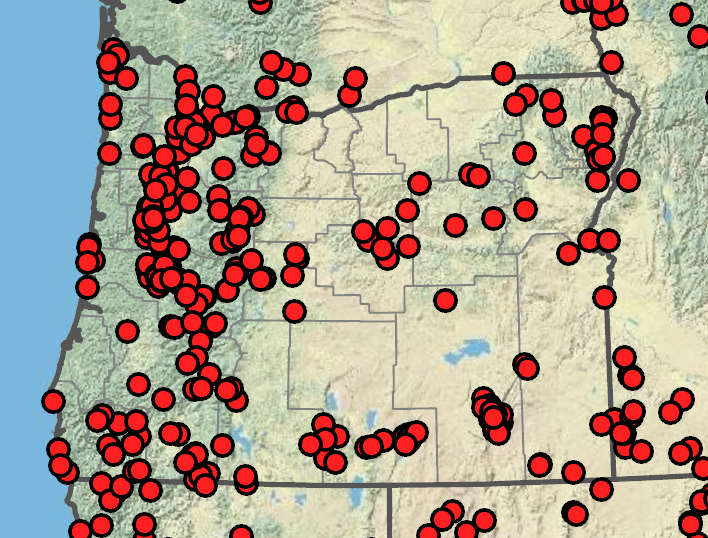Barbarea orthoceras
American winter cress
(1)2–6(10) dm, glabrous.
glabrous or ciliate basally;
blades (1)1.5–6(11) cm, lyrate-pinnatifid, with (1)2–4(5) lateral lobes,, oblong or ovate, 2–10 × 1–5 mm; terminal lobes > laterals, 15–50 × 10–25 mm;
petioles (0.5)1–7(15) cm.
lyrate-pinnatifid, with 1–4 lateral lobes; uppermost incised or pinnatifid;
auricles with hairs or rarely glabrous, sessile.
fruiting pedicels erect or ascending; (2)3–6(7) mm; narrower than fruits.
sepals erect, oblong, 2.5–3.5 mm, yellow;
tips rounded and with hairs or rarely glabrous;
lateral pair slightly saccate;
petals oblanceolate, 5–7(8) × (1.5)2–3 mm, yellow;
styles stout, 0.2–1(2) mm in fruit.
(25)31–40(45) × 1.5–2 mm; terete to subquadrangular, torulose; erect to ascending, rarely appressed to rachis.
(24)26–36 per fruit; ovate or oblong; plump, 1.2–1.5 × 0.9–1 mm; wingless.
=16.
Barbarea orthoceras
Alpine meadows, boggy ground, grasslands, sandbars, scree, rocky cliffs, forests, riverbanks, streambanks, disturbed areas. Flowering Mar–Aug. 0–2700 m. All ecoregions except Col. CA, ID, NV, WA; throughout Canada, northern and western US; Asia. Native.
Ihsan Al-Shehbaz
- Local floras:
BC,
CA,
OR,
WA
- Local Web sites:
CalFlora,
CalPhotos,
Flora NW,
PNW Herbaria,
Turner Photog.
WildflowerSearch
iNaturalist (observations)
USDA Plants Database
- LBJ Wildflower Center
- SEINet
- Plants of the World Online
- Encyclopedia of Life
- Wikipedia
- Google Image Search



